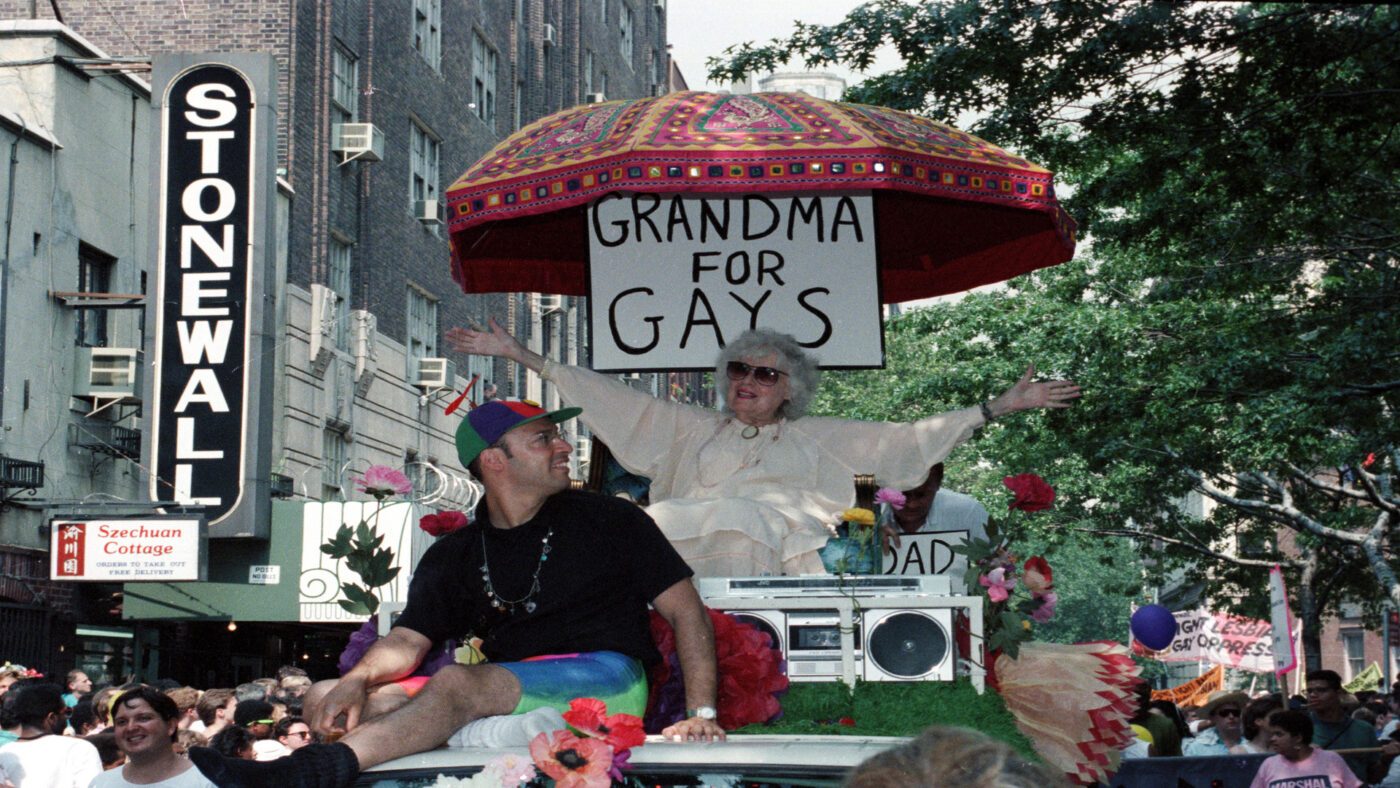Safeguarding the rights of LGBTQI+ people in the U.S. is part of a tradition of ensuring minority rights that is entwined with U.S. history.
June 2021

A man and his elderly mother, who sits beneath an umbrella with a sign that reads “Grandma for Gays,” ride past the site of the original Stonewall Inn in New York during the annual Gay and Lesbian Pride Parade on June 25, 1989. Twenty years earlier, the inn was the scene of demonstrations that gave birth to the LGBTQI+ rights movement. Photograph © AP Images
The movement to safeguard the rights of lesbian, gay, bisexual, transgender, queer and intersex (LGBTQI+) people in the United States is part of a larger U.S. tradition of ensuring minority rights.
That tradition began when President Ulysses S. Grant signed into law the Civil Rights Act of 1871. Now recognized as the world’s first legislation aimed at upholding the rights of an entire class of persons, the statute sought to protect African Americans from attacks by the Ku Klux Klan, a white racist organization.
As industrialization drew more people from rural areas to cities in the early 20th century, LGBTQI+ communities began to form in urban areas across the United States.
In 1924, the Chicago-based Society for Human Rights, founded by activist Henry Gerber, became the country’s earliest known gay rights organization. It was followed by the Mattachine Society, the first national gay rights organization, in 1950, and by the Daughters of Bilitis, a lesbian rights organization, in 1955.
In 1962, Illinois became the first U.S. state to decriminalize consensual same-sex conduct between adults in private.
The Stonewall Uprising that began June 28, 1969, marked a turning point in efforts to protect the rights of LGBTQI+ people, expanding a campaign led by a relatively small group of activists into a widespread movement.
In 1973, the American Psychiatric Association removed homosexuality from its official list of mental disorders. And on October 14, 1979, the National March on Washington for Lesbian and Gay Rights drew some 75,000 gay men, lesbians, bisexuals, transgender people and their heterosexual allies and established LGBTQI+ rights as a national issue.
Over the past 30 years, millions of Americans have come to realize that many of the people they know — their neighbors, colleagues, friends and family members — are LGBTQI+. This recognition, along with positive portrayals of LGBTQI+ people on American TV and film, has spurred greater social acceptance of LGBTQI+ people and support for their equal rights as U.S. citizens.
Recent polls from the Pew Research Center indicate that most Americans support LGBTQI+ rights.
Today, same-sex marriage is legal throughout the United States, thanks to a landmark decision by the U.S. Supreme Court on June 26, 2015. On that date, the Supreme Court ruled that all 50 U.S. states must license same-sex marriages and recognize same-sex marriages performed in other states.
Text courtesy ShareAmerica
COMMENTS